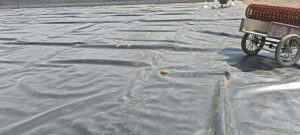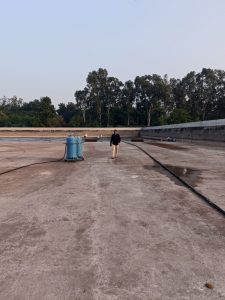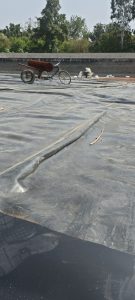ETP Plant / Waste Water Treatment in Chandigarh – Case Study

Clean water is essential to life and is one of the most important natural resources on the planet. Wastewater, which is used water, is also a valuable resource, especially if there are repeated droughts and water shortages in many parts of the world. However, wastewater contains many pollutants and cannot be returned to the environment until it is treated. Therefore, wastewater treatment is doubly important. That is, to restore the water supply and protect the earth from toxins.

If you look at the drought map of the world, you can see that there is not enough water in many parts of the world. In all communities, especially water-stressed areas, proper water treatment practices need to be established so that treated water can be reused or returned to the water cycle but not wasted.
Wastewater may contain contaminants from both private and commercial use. If left untreated, compounds and pathogens in wastewater can harm the health of animals, plants, and birds that live in or near the water. It can also contaminate crops and drinking water and affect human health. Wastewater treatment is the basis for protecting the health of many different ecosystems. Wastewater, properly treated, is a source of water for many purposes. Good wastewater treatment allows the maximum amount of water to be reused instead of going to waste.
Product – HDPE Geomembrane 1.5mm
Quantity – 43500 sq mtr
Location – Chandigarh

Problem
One of the most open countries in the world will be a hydraulic power plant at that time. An alternative to the high growth water crisis in India, which is rounding, is recycling and reusing wastewater. This is one of the measures to reduce the pressure on water resources. Almost 80% of the water supplied to the household is released as drainage. The discharge is almost untreated. As a result, it is a potential pollutant discharged into groundwater and natural drainage systems, causing pollution downstream and water bodies. Chandigarh, an important region of the country, also faced the same sewage treatment problems.
Solution
The decentralized wastewater management approach can be seen as a sustainable and cost-effective alternative because wastewater is treated, discharged, or reused relatively close to its source. Like other systems, distributed systems need to be properly designed, maintained, and operated to provide optimal benefits.
In the rapidly urbanizing cities of developing countries, decentralized wastewater treatment systems are an attractive solution for addressing the problems of water pollution and shortages. They are widely advertised due to their low operational and maintenance requirements and low capital investment.
Decentralized wastewater treatment plants could be a viable alternative to areas that are not connected to the sewer network or are newly developed, underdeveloped, immature, or to be built in the future.
HDPE Geomembranes are widely used as containment basins and tank liners for a variety of chemicals, petroleum, and process wastewater. The membrane has a wide range of chemical resistance and physical properties, making it an ideal material for wastewater treatment processes. HDPE Geomembranes withstand high temperatures and high density, so they can be installed and run underwater. The longevity and cost-effective success of soundproof sheet liners are documented in multiple project profiles around the world.
HDPE Geomembranes are durable and designed for the most demanding applications and environments that require high-strength membranes, especially wastewater treatment plants. HDPE Geomembranes are compatible with aggressive liquids, chlorosulfonated polyethylene (CSPE), and polypropylene, with excellent UV resistance, tensile strength, and more.



